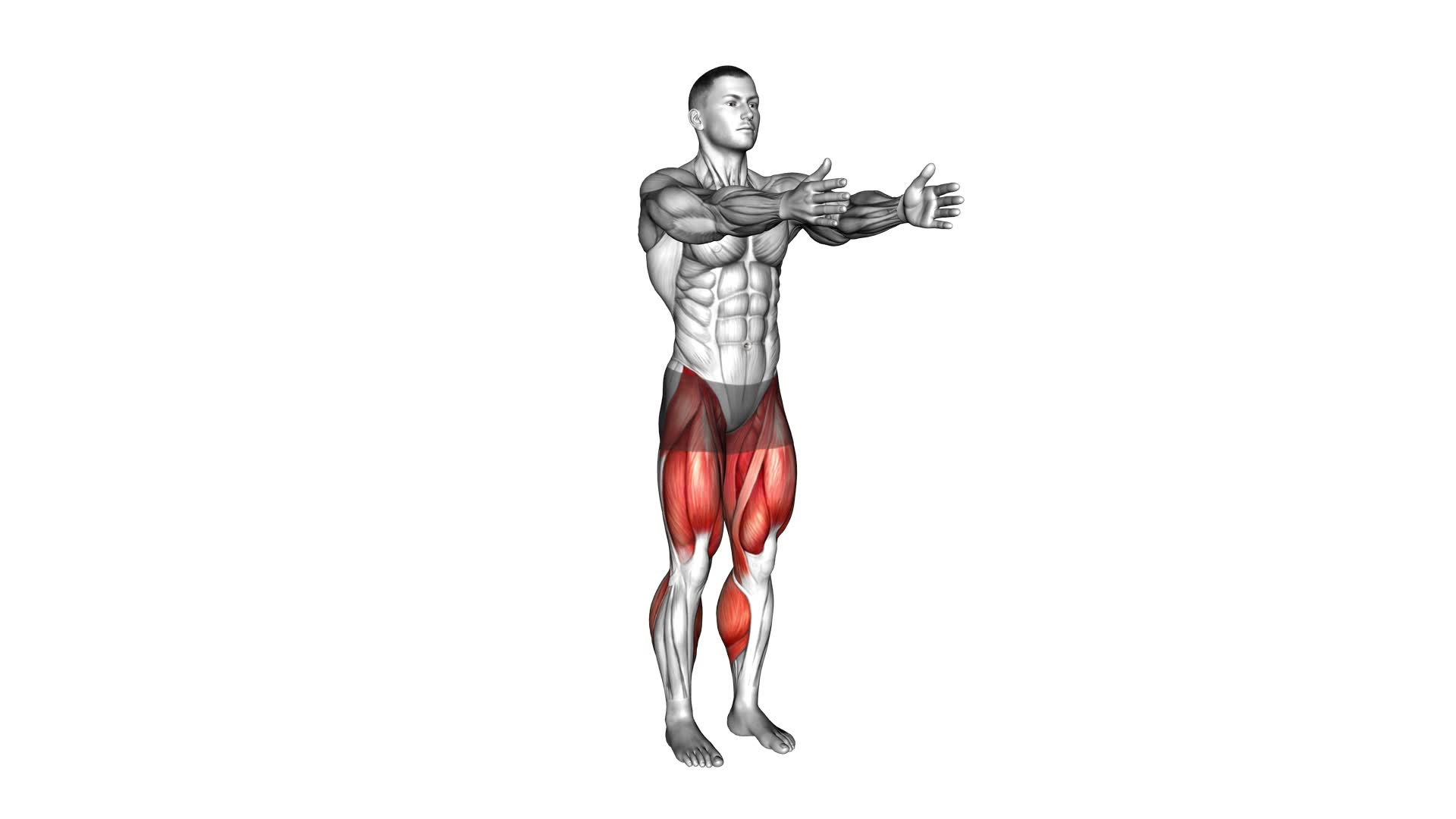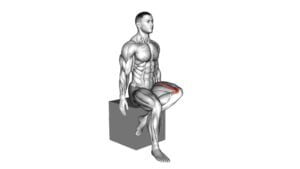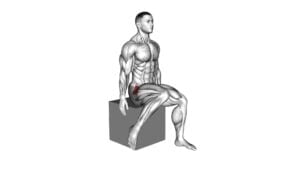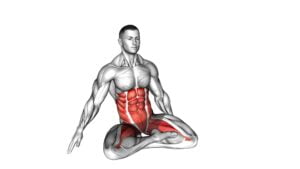Side Lunge With Hip Rotation – Video Exercise Guide & Tips

Are you looking for a challenging exercise that targets your hips and thighs? Look no further than the side lunge with hip rotation!
Watch This Exercise Video
This dynamic movement combines a lateral lunge with a rotation, engaging multiple muscle groups while improving your balance and flexibility.
In this video exercise guide, you'll learn the proper form, common mistakes to avoid, and helpful tips for incorporating this exercise into your workout routine.
Let's get started!
Key Takeaways
- The side lunge with hip rotation targets the hips and thighs while engaging multiple muscle groups.
- It improves balance, flexibility, and activates the glutes, quadriceps, hamstrings, and adductors.
- Proper form and technique include maintaining upright posture, stepping out to the side with the right foot, and rotating the torso from the hips.
- Common mistakes to avoid are not maintaining proper alignment, not stepping far enough to the side, leaning forward or backward, rotating from the lower back instead of the hips, and not engaging the core muscles.
Benefits of the Side Lunge With Hip Rotation
The side lunge with hip rotation offers numerous benefits for improving lower body strength and flexibility. This exercise activates various muscles in the lower body, including the glutes, quadriceps, hamstrings, and adductors. By engaging these muscles, you can build strength and stability in the legs, which is beneficial for everyday activities and sports performance.
In addition to muscle activation, the side lunge with hip rotation also helps in improving balance and stability. This exercise requires you to shift your weight from side to side, challenging your body to maintain proper balance throughout the movement. By practicing this exercise regularly, you can enhance your ability to stabilize yourself and prevent falls or injuries.
To maximize the benefits of the side lunge with hip rotation, it's important to perform it with proper form and technique. This will ensure that you target the intended muscles and minimize the risk of injury. By maintaining a tall posture, keeping your core engaged, and performing the exercise in a controlled manner, you can optimize the results and reduce the strain on your joints.
Transitioning into the next section, let's now discuss the proper form and technique for performing the side lunge with hip rotation.
Proper Form and Technique
To perform the side lunge with hip rotation correctly, start by standing with your feet shoulder-width apart. Here are some tips to ensure proper form and technique:
- Common errors to avoid:
- Allowing your knee to go past your toes: Keep your knees in line with your toes to prevent strain on your joints.
- Leaning too far forward or backward: Maintain an upright posture throughout the exercise to engage the correct muscles and prevent injury.
- Proper alignment:
- Step out to the side with your right foot, keeping your left foot planted on the ground.
- Bend your right knee and lower your body down into a lunge position, making sure your knee stays in line with your toes.
- As you lunge, rotate your torso to the right, twisting from your hips.
- Push off with your right foot to return to the starting position, then repeat on the other side.
Common Mistakes to Avoid
Avoid these common mistakes when performing the side lunge with hip rotation to ensure proper form and technique.
- One common mistake isn't maintaining proper alignment. Make sure to keep your chest up, shoulders back, and spine straight throughout the movement. This will help you engage the correct muscles and prevent any strain on your back.
- Another mistake isn't stepping far enough to the side. When lunging, take a big step sideways and sink into the lunge, keeping your knee aligned with your toes. Failure to step far enough can limit the range of motion and reduce the effectiveness of the exercise.
- Additionally, avoid leaning forward or backward during the lunge. This can throw off your balance and put unnecessary pressure on your knees and hips. Keep your upper body upright and centered over your hips.
- Lastly, be mindful of the rotation motion. Make sure to rotate from your hips and not your lower back. Engage your core muscles to maintain stability and control throughout the movement.
Modifications and Progressions
To advance the side lunge with hip rotation, you can incorporate modifications and progressions to challenge your muscles even further. Here are some alternative exercises and advanced variations that you can try:
- Alternative Exercises:
- Weighted Side Lunge with Hip Rotation: Hold a dumbbell or kettlebell in your hands as you perform the side lunge with hip rotation. The added resistance will increase the intensity and engage your muscles even more.
- Curtsy Lunge with Hip Rotation: Instead of stepping to the side, cross one leg behind the other in a curtsy motion while rotating your hips. This variation targets different muscles and adds variety to your workout routine.
- Advanced Variations:
- Jumping Side Lunge with Hip Rotation: Perform a side lunge with hip rotation, but add a jump as you switch sides. This explosive movement won't only challenge your muscles but also improve your cardiovascular fitness.
- Side Lunge with Banded Resistance: Place a resistance band around your thighs or ankles while performing the side lunge with hip rotation. The band adds an extra challenge by increasing the resistance and activating your muscles in a different way.
Incorporating these alternative exercises and advanced variations into your side lunge with hip rotation routine can help you take your workout to the next level and continue challenging your muscles for optimal strength and mobility.
Tips for Incorporating the Side Lunge With Hip Rotation Into Your Workout Routine
To incorporate the side lunge with hip rotation into your workout routine, start by adding it as a dynamic warm-up exercise before moving into your main workout. This exercise is a great way to activate your hip muscles and improve your hip mobility.
When incorporating side lunges with hip rotation into your workout routine, it's important to focus on proper form and technique. Start by standing with your feet hip-width apart and take a wide step to the side, bending your knee and sitting back into a lunge position. As you lunge, rotate your torso towards the side of the leg that's lunging. Make sure to keep your knee in line with your toes and your back straight throughout the movement.
Common mistakes to watch out for include collapsing your knee inward, rounding your back, and not fully rotating your hips. These mistakes can lead to injury and limit the effectiveness of the exercise.
To modify the side lunge with hip rotation, you can decrease the range of motion by taking smaller steps or reducing the depth of the lunge. If you're looking to progress, you can add resistance by holding dumbbells or using a resistance band.
Incorporating side lunges with hip rotation into your workout routine can help improve your lower body strength, stability, and mobility. Remember to always prioritize proper form and technique to get the most out of this exercise.
Frequently Asked Questions
How Many Calories Does the Side Lunge With Hip Rotation Burn?
The side lunge with hip rotation is a great exercise for targeting your lower body and burning calories. By incorporating side lunges into your full body workout routine, you can work multiple muscle groups and increase the intensity of your workout.
This exercise engages your glutes, quads, and hamstrings, helping you to build strength and burn calories. Adding variations to your side lunges can provide a complete lower body workout and help you achieve your fitness goals.
Can the Side Lunge With Hip Rotation Help Improve Flexibility?
Yes, the side lunge with hip rotation can help improve flexibility. By incorporating this modification into your workout routine, you can target and stretch your hip muscles, increasing their range of motion.
This exercise also engages your glutes, quads, and inner thighs, providing added strength and stability.
The benefits of hip rotation include improved mobility, better posture, and reduced risk of injury.
How Often Should the Side Lunge With Hip Rotation Be Performed for Optimal Results?
For optimal results, it's important to consider the frequency of performing the side lunge with hip rotation.
To fully benefit from this exercise, it's recommended to incorporate it into your workout routine at least 2-3 times a week.
Regularly practicing this movement will help improve flexibility, strengthen your lower body muscles, and enhance hip mobility.
Remember to always listen to your body and gradually increase the intensity and duration of the exercise over time.
Can the Side Lunge With Hip Rotation Help Reduce Lower Back Pain?
The side lunge with hip rotation can be effective in reducing lower back pain. By incorporating side lunge variations and incorporating hip rotation, you can target and strengthen the muscles in your lower back, hips, and thighs.
This exercise helps improve flexibility, stability, and overall core strength. It's recommended to perform this exercise regularly to experience optimal benefits for reducing lower back pain.
Are There Any Precautions or Contraindications for Performing the Side Lunge With Hip Rotation?
Before attempting the side lunge with hip rotation, it's important to be aware of the precautions and contraindications associated with this exercise. Knowing these can help prevent any potential injuries or complications.
Conclusion
Incorporating the side lunge with hip rotation into your workout routine can provide numerous benefits, including improved hip mobility and increased lower body strength.
By following proper form and technique, you can maximize the effectiveness of this exercise. Avoid common mistakes such as leaning forward or rounding your back.
Additionally, consider modifications and progressions to challenge yourself as you become more comfortable with the movement.
Remember to consult with a fitness professional before starting any new exercise routine.

Author
Years ago, the spark of my life’s passion ignited in my mind the moment I stepped into the local gym for the first time. The inaugural bead of perspiration, the initial endeavor, the very first surge of endorphins, and a sense of pride that washed over me post-workout marked the beginning of my deep-seated interest in strength sports, fitness, and sports nutrition. This very curiosity blossomed rapidly into a profound fascination, propelling me to earn a Master’s degree in Physical Education from the Academy of Physical Education in Krakow, followed by a Sports Manager diploma from the Jagiellonian University. My journey of growth led me to gain more specialized qualifications, such as being a certified personal trainer with a focus on sports dietetics, a lifeguard, and an instructor for wellness and corrective gymnastics. Theoretical knowledge paired seamlessly with practical experience, reinforcing my belief that the transformation of individuals under my guidance was also a reflection of my personal growth. This belief holds true even today. Each day, I strive to push the boundaries and explore new realms. These realms gently elevate me to greater heights. The unique combination of passion for my field and the continuous quest for growth fuels my drive to break new ground.







